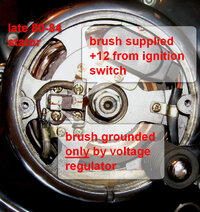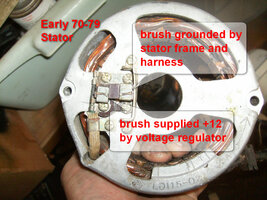tommytwohands
XS650 Enthusiast
Hi,
Got off work early and am working on a new XS project, sidecare rig. Can someone demystify how I can accomplish this line from the charging guide?
"On the solid state regulator models all you need to do is locate the green wire at the regulator plug and make a jump from it to ground"
...On a stock tci ignition/charging system. Do I remove the green wire from the connector to accomplish this? certainly overthinking
Tommy
Got off work early and am working on a new XS project, sidecare rig. Can someone demystify how I can accomplish this line from the charging guide?
"On the solid state regulator models all you need to do is locate the green wire at the regulator plug and make a jump from it to ground"
...On a stock tci ignition/charging system. Do I remove the green wire from the connector to accomplish this? certainly overthinking
Tommy


